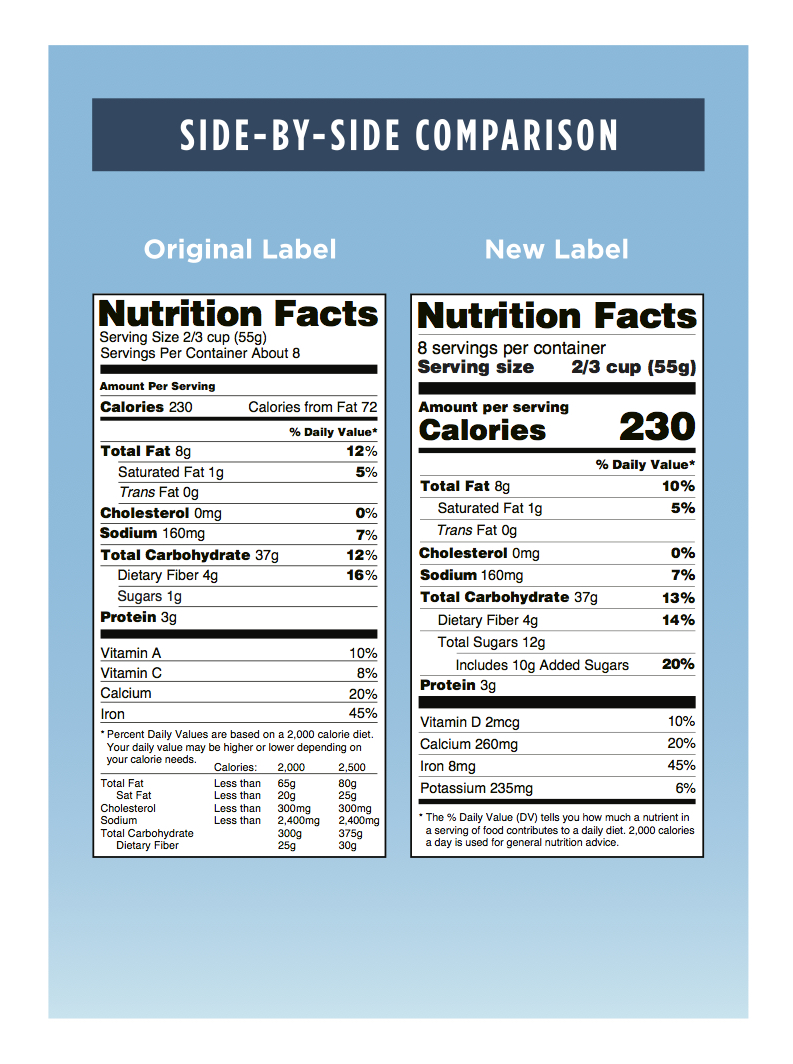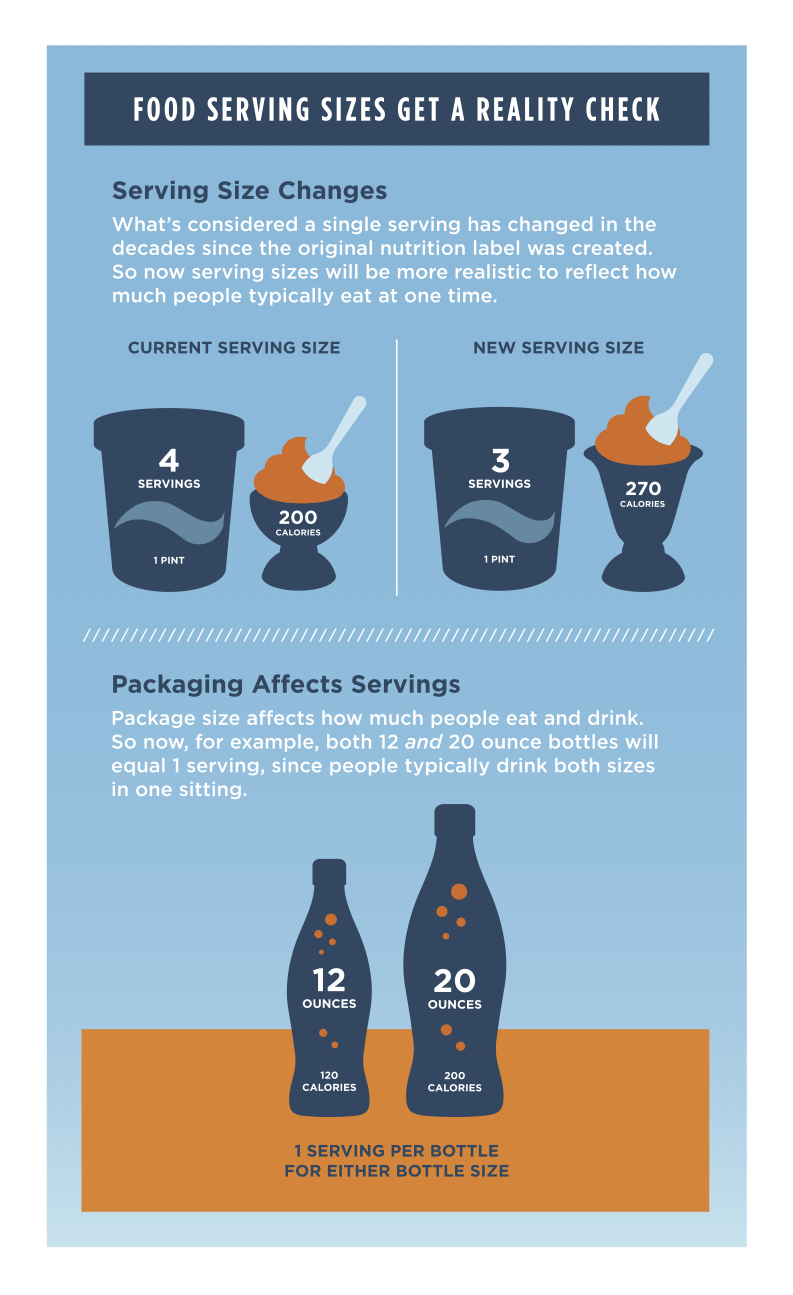![2016-05-23_FDA_Blog_730x485[9]](https://blog.fitbit.com/wp-content/uploads/2016/05/2016-05-23_FDA_Blog_730x4859.jpg)
If you’ve ever flipped over a box of granola or a can of coconut milk and wondered which number to look at first, get ready for some great news. First lady Michelle Obama has been calling for a redesign of the nutrition facts label as part of the Let’s Move campaign, and last week she made a big announcement in Washington, DC: the Food and Drug Administration (FDA) met her challenge!
The FDA just approved a whole new look for the Nutrition Facts that you see on packaged foods. It’s been more than two decades since the last update. The new labels should be quicker and easier to read, to help you make healthy choices. The changes follow closely on the heels of the new dietary guidelines, which came out earlier this year, and also reflect the undeniable link between diet and chronic diseases.
Mrs. Obama put it into perspective for families, saying, “You will no longer need a microscope, a calculator, or a degree in nutrition to figure out whether the food you’re buying is actually good for our kids.”
Check out the old and new food labels, side by side, and you’ll notice three big changes:
 Illustration provided by FDA.gov
Illustration provided by FDA.gov
1. Serving Sizes Get Real
The new label, with a bigger and bolder font, will make it easier for you to spot how many servings the package contains, what a serving size is, and how many calories are in one serving. The actual servings sizes will also change to be more in line with what people typically eat—which is much more than we ate 20 years ago! For instance, a 20-ounce bottle of soda, which currently says it contains multiple servings, will soon just say “1 serving.”

Illustration provided by FDA.gov
2. Added Sugars Are Called Out
For the first time, you’ll now be able to see how many grams of “added sugars” a product contains, compared to a recommended daily limit. You’ll see the difference between healthy, naturally occurring sugars in dairy and fruit, and added sugars like sucrose, honey, and high fructose corn syrup. This is exciting news, especially considering the huge amount of evidence stacking up against added sugars, and the health benefits linked with keeping your intake below 12 teaspoons a day (or 10 percent of total calories).
3. More Specific Numbers for Important Nutrients
Manufacturers will also have to indicate the actual amount of vitamins and minerals, not just the percent of daily value. Deficiencies have also changed over the last 20 years—vitamin A and C are generally no longer a problem, whereas vitamin D (for bone health) and potassium (for blood pressure) are top concerns.
Take another look, and you’ll spot the key updates!
 Illustration provided by FDA.gov
Illustration provided by FDA.gov
When Will the Food Labels Change?
You’re going to have to wait at least another couple of years to see the changes fully take effect, as manufacturers have until mid 2018 to comply. But even if change is slow, it’s a step in the right direction. Look for the new food labels on a shelf near you, and use them as a quick and easy way to become more supermarket savvy.
This information is for educational purposes only and is not intended as a substitute for medical diagnosis or treatment. You should not use this information to diagnose or treat a health problem or condition. Always check with your doctor before changing your diet, altering your sleep habits, taking supplements, or starting a new fitness routine.

If you have questions about a Fitbit tracker, product availability, or the status of your order, contact our Support Team or search the Fitbit Community for answers.
Please note: Comments are moderated and may not appear immediately after submission.